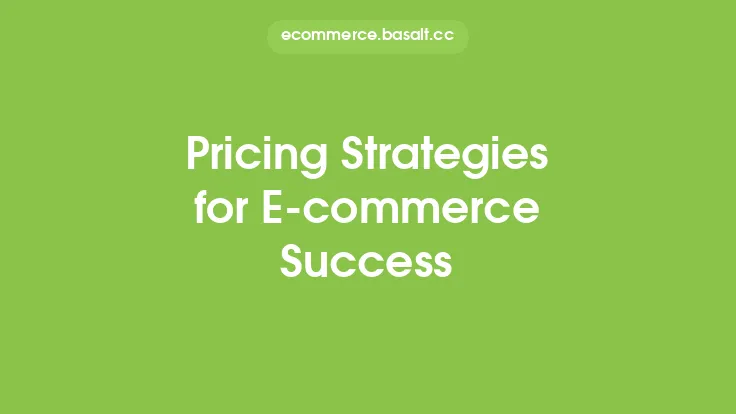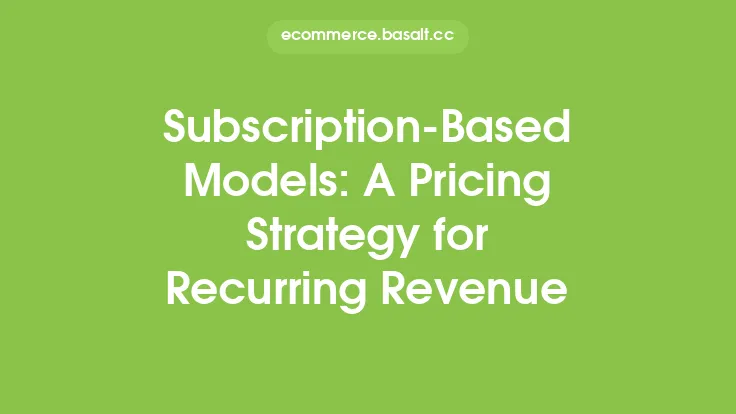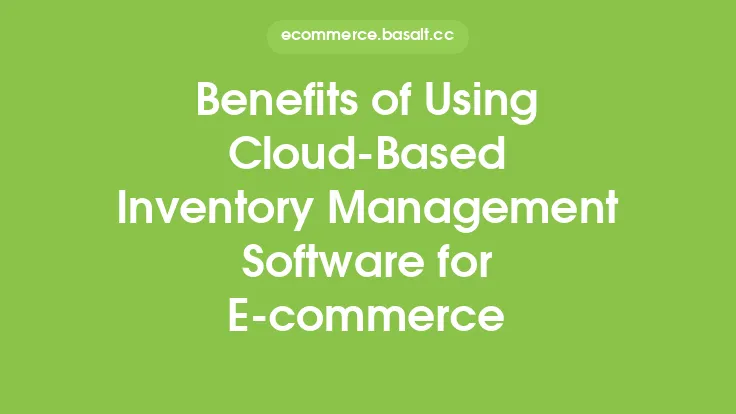In the world of e-commerce, pricing strategies play a crucial role in determining the success of online businesses. One such strategy that has gained significant attention in recent years is value-based pricing. This approach involves setting prices based on the perceived value of a product or service to the customer, rather than solely on its production costs or market rates. In this article, we will delve into the concept of value-based pricing for e-commerce products, its benefits, and how to implement it effectively.
Understanding Value-Based Pricing
Value-based pricing is a pricing strategy that focuses on the value that a product or service provides to the customer. It takes into account the customer's perception of the product's benefits, features, and quality, as well as their willingness to pay for it. This approach recognizes that customers are willing to pay more for products that offer unique benefits, solve specific problems, or provide exceptional value. By setting prices based on the perceived value, businesses can maximize their revenue and profitability.
Benefits of Value-Based Pricing
The benefits of value-based pricing are numerous. Firstly, it allows businesses to differentiate themselves from competitors and establish a unique market position. By focusing on the value proposition, businesses can create a competitive advantage that is difficult to replicate. Secondly, value-based pricing enables businesses to charge premium prices for high-value products, resulting in increased revenue and profitability. Thirdly, it helps businesses to build strong relationships with customers, as they are willing to pay for the value they receive. Finally, value-based pricing encourages businesses to continuously innovate and improve their products, as they need to demonstrate the value they provide to customers.
Identifying Customer Value
To implement value-based pricing effectively, businesses need to understand what drives customer value. This involves conducting market research, gathering customer feedback, and analyzing customer behavior. Some key factors that influence customer value include product quality, features, and benefits, as well as the customer's perceived needs and wants. Businesses should also consider the customer's willingness to pay, as well as their sensitivity to price. By understanding these factors, businesses can create a value proposition that resonates with their target audience.
Calculating Value-Based Prices
Calculating value-based prices involves several steps. Firstly, businesses need to determine the customer's perceived value of the product, which can be done through surveys, focus groups, or other market research methods. Secondly, businesses need to calculate the cost of producing and delivering the product, including any overheads or expenses. Thirdly, businesses need to determine the price elasticity of demand, which refers to how sensitive customers are to price changes. Finally, businesses can use this information to set a price that reflects the customer's perceived value, while also ensuring profitability.
Implementing Value-Based Pricing
Implementing value-based pricing requires a strategic approach. Businesses should start by segmenting their customer base, as different customer groups may have different perceptions of value. They should then create a value proposition that resonates with each segment, highlighting the unique benefits and features of the product. Businesses should also develop a pricing strategy that takes into account the customer's willingness to pay, as well as the competitive landscape. Finally, businesses should continuously monitor and adjust their pricing strategy, as customer perceptions and market conditions can change over time.
Common Challenges and Mistakes
While value-based pricing offers many benefits, there are also common challenges and mistakes that businesses should be aware of. One of the biggest challenges is determining the customer's perceived value, which can be difficult to quantify. Businesses may also struggle to balance their pricing strategy with their costs and profitability goals. Additionally, businesses may make mistakes such as overpricing or underpricing their products, which can result in lost sales or revenue. To avoid these mistakes, businesses should conduct thorough market research, gather customer feedback, and continuously monitor their pricing strategy.
Best Practices for Value-Based Pricing
To get the most out of value-based pricing, businesses should follow several best practices. Firstly, they should conduct ongoing market research to stay up-to-date with customer perceptions and market trends. Secondly, they should develop a strong value proposition that resonates with their target audience. Thirdly, they should segment their customer base and develop pricing strategies that cater to each segment. Fourthly, they should continuously monitor and adjust their pricing strategy, as customer perceptions and market conditions can change over time. Finally, they should ensure that their pricing strategy is aligned with their overall business goals and objectives.
Conclusion
Value-based pricing is a powerful strategy for e-commerce businesses, as it allows them to differentiate themselves, establish a unique market position, and maximize their revenue and profitability. By understanding what drives customer value, calculating value-based prices, and implementing a strategic pricing approach, businesses can create a competitive advantage that drives long-term success. While there are challenges and mistakes to be aware of, following best practices such as ongoing market research, strong value propositions, and continuous monitoring can help businesses to get the most out of value-based pricing. As the e-commerce landscape continues to evolve, value-based pricing will remain a crucial strategy for businesses that want to stay ahead of the competition and drive long-term growth and profitability.





